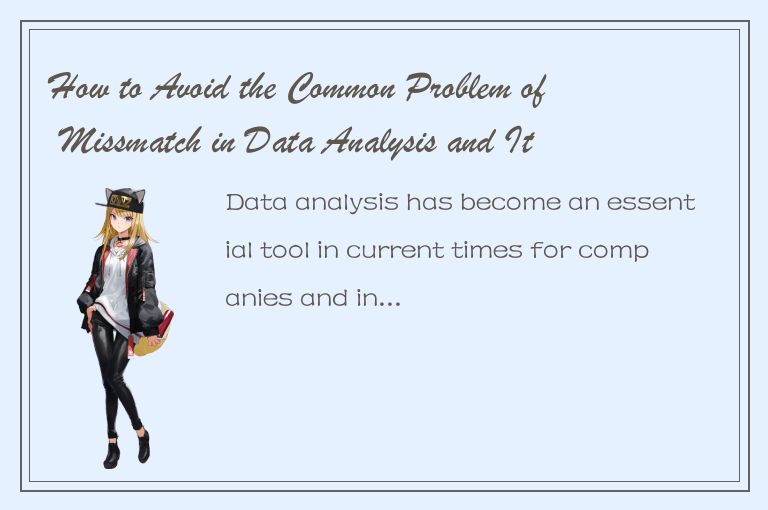Data analysis has become an essential tool in current times for companies and individuals to extract insights from large amounts of data. Despite this, data mismatching is a common problem that can occur in data analysis. A data mismatch happens when the data being analyzed does not correspond to the intended outcome.

Data mismatch can present in different ways, such as missing records, duplicate entries, inconsistent data formatting, etc. The consequence of data mismatch can lead to invalid insights, wrong conclusions, and even bad decision-making. Here are some tips on how to avoid the common problems of mismatching in data analysis and its impact on your findings.
1. Define data quality standards and data formats
One of the key ways to prevent data mismatch is to establish data quality standards and formats. Standards give data documentation, clarification, examination, and validation. Data formats aid in maintaining consistency by ensuring the data type and file format are compatible to ensure data mappings are clean and straightforward across various data sources.
It’s essential to take the time to identify any missing data or anomalies and resolve them before uploading the data. Consistency is key in data analysis as it helps in quickly identifying any anomalies and ensures accurate analysis.
2. Cross-check data sources
Before doing any analysis, cross-checking data sources is vital in ensuring that the data being analyzed is accurate and consistent. Data from various sources should be verified and cross-checked, which verifies consistency and reliability of insights. Cross-checking data can be done using tools such as spreadsheets, which makes it easier to compare the datasets and identify any inconsistencies. Ensuring the inputs are correct is a crucial step to avoid data mismatch and to get accurate results.
3. Check for duplicate entries
Duplicate entries can compromise the accuracy of your analysis. To avoid duplicate data entries, it’s best to de-duplicate before analysis. For instance, if you are analyzing data from customers, you may have multiple records of the same customer, which can lead to duplicate entries. This can be resolved by validating the identity of each customer, eliminating duplicate records, or conducting fuzzy matching algorithms to match entries correctly.
4. Employ automated data analytics tools
Automated data analytics tools can help reduce the likelihood of data mismatch. Automated tools can aid in identifying and highlighting data anomalies, missing data, invalid values, and duplicate records, which are wholly relevant areas of focus for improving data quality. With automated data analytics tools, it's easier to see the whole picture and identify where the data mismatch occurred. Tools such as Tableau are useful in creating dashboards that provide insights into data in more comprehensible formats, making it easier to identify mismatched data.
5. Hire a data specialist
Hiring a data specialist can also help mitigate the problem of mismatched data. A data specialist has the expertise to identify and troubleshoot data problems, validate data, and ensure that all data sources are accurately brought in to create a streamlined dataset. This can aid in identifying where data mismatches are occurring, and with the help of the data specialist, the data can be optimized for accurate analysis. By hiring a data specialist, you can rest assure that your data is fully optimized and analyzed for your business.
Conclusion
Data mismatch is a common issue that can compromise the accuracy of data analysis. The above-mentioned tips can aid in identifying and mitigating data anomalies, leading to an accurate interpretation of data. As such, ensuring that data is optimized is vital for businesses to make critical decisions. Remember that every business and data analysis is different, so what works for one might not necessarily work for others. Nonetheless, implementing the above strategies can aid in mitigating the impact of data mismatch and leads to more successful data analysis.




 QQ客服专员
QQ客服专员 电话客服专员
电话客服专员